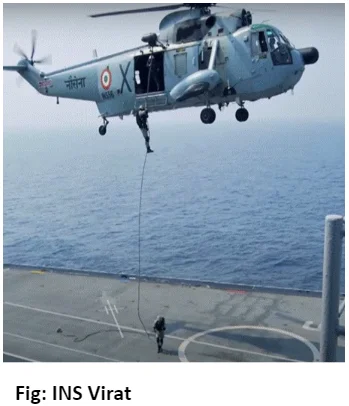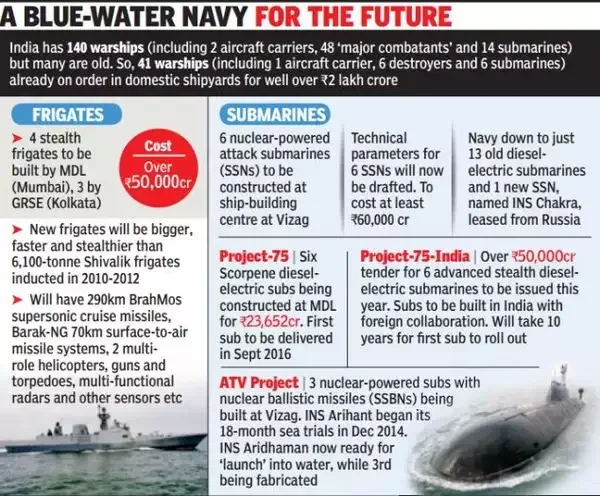![]() June 14, 2024
June 14, 2024
![]() 6085
6085
![]() 0
0
The Indian Navy operates a diverse fleet of vessels, ranging from advanced aircraft carriers to stealth corvettes and submarines. These vessels play crucial roles in safeguarding India’s maritime interests and maintaining security in the region.
INS Astradharini: An indigenously (95%) built Torpedo Launch and Recovery Vessel ‘INS Astradharini’ was designed by the NSTL, M/s Shoft Shipyard and IIT Kharagpur.

|
Submarines
Strategic Strike Nuclear Submarine (SSBN): INS Arihant is a 6,000-tonne (SSBN) with a length of 110 metres and a breadth of 11 metres and is able to carry 12 Sagarika K 15 SLBMs.

| Must Read | |
| Current Affairs | Editorial Analysis |
| Upsc Notes | Upsc Blogs |
| NCERT Notes | Free Main Answer Writing |
With ongoing projects like Project 17A and Project 75(I), India continues to strengthen its naval capabilities through indigenous design and construction of advanced warships and submarines.
| Related Articles | |
| DEFENCE TECHNOLOGY | Indian Submarines: Challenges and Regional Threats |
| DRDO: Origin, Objectives, Functions and Major Projects | Indian Navy Day 2023 |
<div class="new-fform">
</div>
Latest Comments